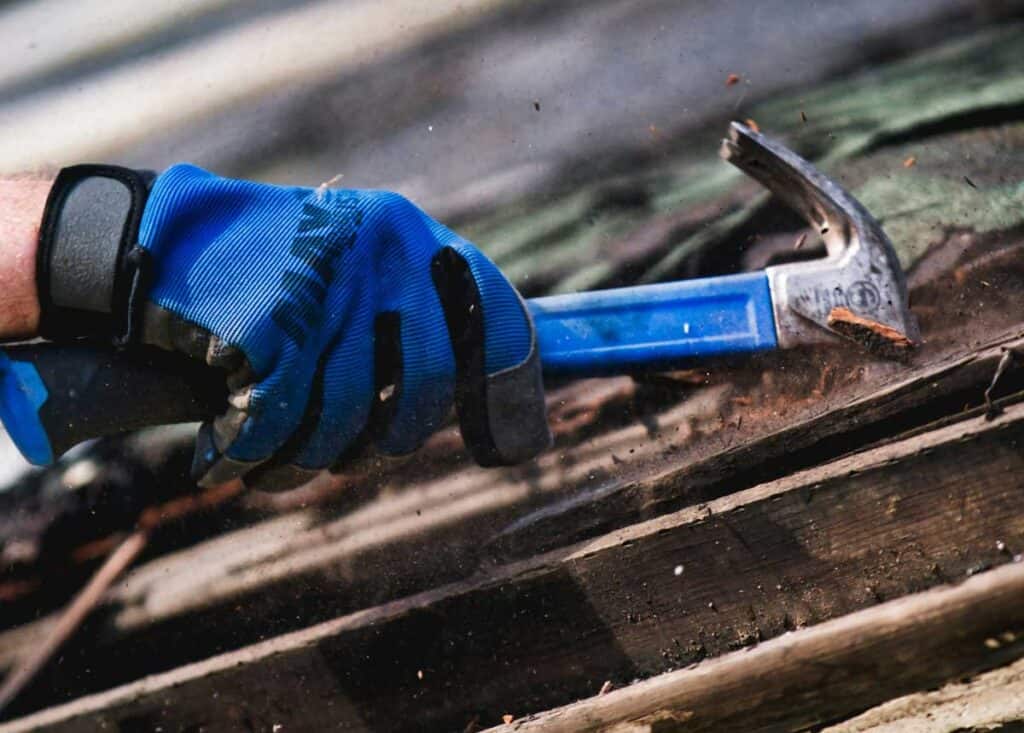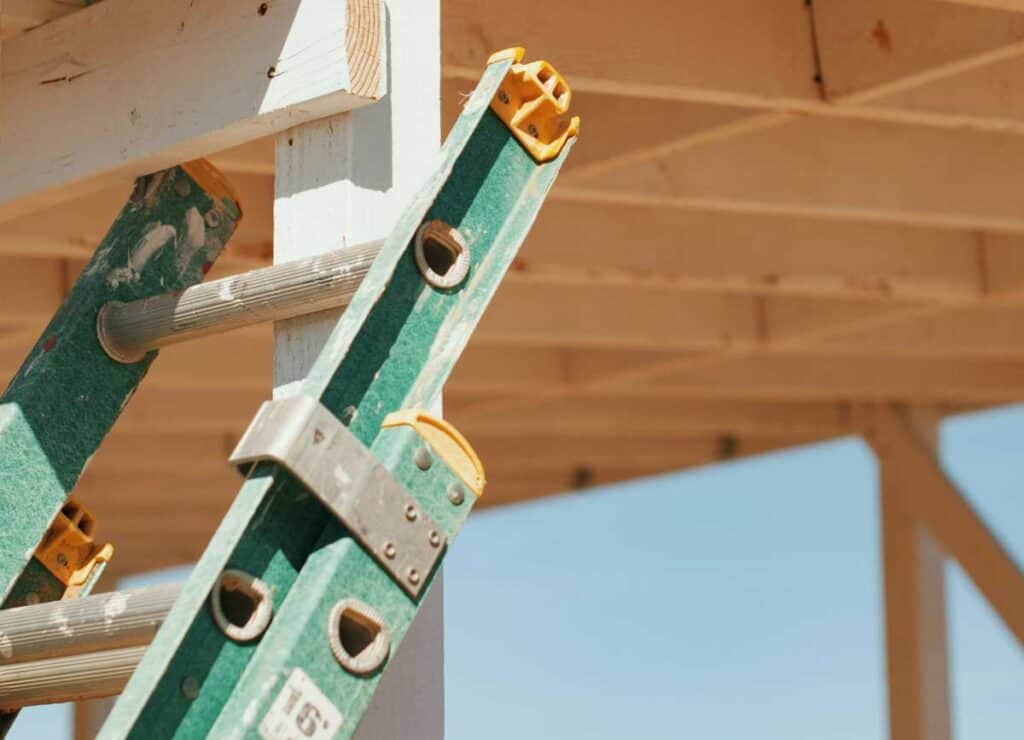Your roof: the unsung hero of your home, silently working day and night to protect you from the elements. But, like any hardworking feature of your home, your roof doesn’t last forever. Whether you’ve been in your home for years or you’re just starting to notice a few problems, it’s important to know when your roof has reached the end of its life.
If you’re asking yourself, “Is it time to replace my roof?” — you’re not alone. Many homeowners are in the same boat, unsure whether the issues they’re noticing are signs of normal wear and tear or the need for a full replacement. Here’s the thing: roofs don’t last forever. So, understanding the key signs that your roof is nearing the end of its life is essential. Not only can this help prevent more extensive damage, but it can also save you big bucks in the long run.
In this post, we’ll walk you through the most common signs that your roof is ready for retirement, share some common roofing issues, and help you understand when it’s better to repair your roof versus when it’s time for a full replacement. We’ll also sprinkle in some humor and real-world advice to keep you informed and entertained along the way. Let’s dive in!
The Life Expectancy of Your Roof
Before we get into the specifics of identifying when it’s time for a roof replacement, let’s start with a simple question: How long does a roof actually last?
The answer depends on several factors, including the type of roofing material, the quality of the installation, and the climate your roof is exposed to. Here’s a quick breakdown of the warning signs you need to inspect your roof.
- Asphalt Shingles: 20-30 years, depending on the quality (e.g., standard vs. architectural shingles)
- Wood Shingles or Shakes: 30-50 years (with proper maintenance) Not a good idea to put them on in Colorado any longer because of growing fire danger.
- Metal Roofs: 40-70 years (great investment for longevity)
- Tile Roofs: 50-100 years (super durable, but pricey upfront)
- Slate Roofs: 75-100+ years (if you have a slate roof, you’re living the high life!)
Now that you know what to expect in terms of lifespan, let’s take a closer look at the signs that your roof may be on its last legs. If it could talk… it would tell you. But since it can’t… here is what to look for.

Signs Your Roof is Nearing the End of Its Life
1. Missing or Curling Shingles
One of the most obvious signs that your roof may need replacing is missing, curling, or signs of roof damage. buckling shingles. Shingles are designed to lie flat on the roof, providing a protective layer against the elements. But over time, they can curl, crack, or fall off entirely. If you notice a few shingles missing or curled edges, that’s an early sign of roof deterioration. A single missing shingle is an easy fix, but if you find that multiple damaged shingles are present, you might need a whole new roof.
Pro Tip: If you see shingles that are curled, cracking, or buckling, it could also indicate that your roof is showing signs you need a new roof, there’s mold, or that there’s excessive moisture in your attic or under your roof. Either way, it’s a sign that things are wearing out.
2. Leaks and Water Stains
Leaking is one of the biggest red flags that your roof needs attention. If you notice water stains or dampness on your ceiling, walls, or attic, it’s a surefire sign that you need to inspect your roof. Small leaks can be a sign that you need a new roof. They can sometimes be repaired, but if the damage is extensive or multiple leaks are present, it’s a clear indicator that your roof needs replacing.
Water damage can also lead to mold and mildew growth, which can cause health issues and further damage your home. So, if you spot leaks or water stains, don’t ignore them — get a professional roof inspection immediately!
3. Damaged Flashing
Flashing is the material around roof features such as chimneys, skylights, vents, and eaves and rakes are designed to prevent water from seeping in around these openings. Rust on the flashing is a warning sign you need to inspect your roof. Over time, flashing can crack, or shift out of place, which compromises the integrity of your roof being protected properly. Damaged flashing can lead to warning signs you need a new roof, like leaks, water penetration, and eventually wood rot.
If you notice that your flashing is damaged or deteriorating, it’s essential to have it inspected. Depending on the damage, flashing issues can sometimes be repaired, but if they’re widespread, it may be a sign of a more significant problem.
4. Inspect your roof regularly for any signs of roof damage. Granules in the Gutters
When asphalt shingles begin to deteriorate, or have been hit by multiple hail and wind storms the protective granules start to wear off. This often shows up as small sand like granules in your gutters, which were once part of your shingles’ protective coating. Granule loss is a sign of aging shingles that have lost their ability to protect against UV rays, rain, and other weather elements. If you notice large amounts of granules in your gutters, it’s time to consider replacing your roof.
Fun Fact: Those granules you find in the gutters actually help protect the shingles from the sun’s UV rays, just like a hat would protect someone that is losing hair up top. When they wear away, your shingles start to lose their durability because the backing of the shingles are not meant to handle intense UV rays. Having “balding shingles” will also make it hard to identify future hail damage if and when that shows up in a storm down the line.
5. Sagging or Drooping Roof
If your roof appears to be sagging or dipping in certain areas, this is a serious warning sign. A sagging roof could indicate that the underlying support structure or decking has been compromised, often due to moisture damage or rotting wood is one of the signs you need a new roof. A sagging roof can lead to complete collapse if not addressed.
This is not something you want to ignore, so if you spot any sagging or drooping, call in a professional to evaluate the damage and determine if replacement is necessary.
6. Age of Your Roof
Even if your roof isn’t showing obvious signs of damage, age alone can be a big factor in whether it needs replacing. As mentioned earlier, most roofs have an expected lifespan of 20-30 years (depending on the material). If your roof is approaching or has exceeded this age range, it’s worth having it inspected to determine if it’s still in good condition or if it’s time for a replacement.
Tip: If you’re unsure how old your roof is, check with your contractor or look through your home’s inspection reports or past roofing permits that were pulled with the city or county. This can give you a general idea of when your roof was last replaced or repaired.

How to Decide: Repair or Replace? Inspect your roof to determine the best course of action.
Now that you’ve checked off some of the major signs that your roof may need replacing, you might be wondering: Should I repair my roof, or is it time to replace it?
It’s a great question! Here’s a quick rundown of how to decide:
When to Repair:
Look for signs you need a new roof before making a decision.
- Minor damage: If only a few shingles are missing or damaged, repairs may be the way to go. A small leak that hasn’t caused significant damage can usually be patched up with a repair.
- Localized issues: If only one area of your roof is compromised (e.g., a small patch of damaged flashing), repairs are usually the better, more cost-effective choice.
When to Replace:
- Extensive damage: If your roof is riddled with missing shingles, sagging areas, or widespread leaks, it’s time for a full replacement.
- Age of the roof can be a sign that you need a new roof: If your roof is nearing the end of its lifespan (typically over 20 to 25 years for asphalt shingles), it may be more cost-effective to replace it than to keep patching it up. Often times shingles that old cannot be effectively repaired.
- Frequent repairs: If you’ve had to patch your roof repeatedly over the years, a new roof will provide more peace of mind and less ongoing maintenance.
Pro Tip: Always ask for a professional evaluation! A roofing contractor like Denny’s Roofing can give you an honest opinion about whether a repair or replacement is your best option.
Other Popular Questions We Receive Related to Roof Repair and Replacement
Q: What are the warning signs you need a new roof?
A: Warning signs that indicate you need a new roof include missing or damaged shingles, frequent leaks, sagging areas, and signs of water damage on your ceiling or walls.
Q: How can I tell if my roof needs to be replaced rather than repaired?
A: If your roof is over 20 years old, has widespread damage, or if you notice significant issues like a sagging roof deck, it may be time to replace your roof rather than repair it.
Q: What are common signs that it’s time to replace your roof?
A: Common signs include curling or buckling shingles, granules in gutters, and daylight visible through the roof boards. These indicate that your roof is no longer effective and needs replacement.
Q: How do missing or damaged shingles affect my roof?
A: Missing or damaged shingles can expose your roof deck to the elements, leading to leaks and further structural damage. It’s an indication that your roof may need replacement.
Q: How does a leaking roof impact my home?
A: A leaking roof can cause water damage to your home’s interior, promote mold growth, and compromise the structural integrity of your roof system.
Q: When should I start considering a replacement for my shingle roof?
A: You should start considering a replacement if your shingle roof is nearing the end of its lifespan, typically around 20-25 years, or if you notice significant wear and tear.
Q: What is the lifespan of your roof typically?
A: The lifespan of your roof depends on the materials used. Asphalt shingle roofs typically last 20-25 years, while metal or tile roofs can last longer.
Q: Are there any specific indications that your roof was installed improperly?
A: Indications of improper installation include uneven shingles, poor alignment, and inadequate sealing, which can lead to early failure and the need for a new roof.
Q: Can a roof repair be sufficient, or is it time for a new roof?
A: Minor issues may only require a repair, but if you notice extensive damage, age-related wear, or multiple problem areas, it might be time for a new roof.
Q: How can regular inspections help in determining if a roof needs replacement?
A: Regular inspections can help identify early signs of damage or wear, allowing you to address issues before they require a complete roof replacement.

The Bottom Line: Protect Your Home with a New Roof
If you’ve noticed any of the signs mentioned above—whether it’s curling shingles, leaking, or just the overall age of your roof—it might be time to consider a replacement. While replacing a roof is an investment, it’s one that can help you need a new roof in the long run. Protect your home from costly damage, increase your home’s value, and provide peace of mind knowing that your roof is in good condition, you may need to invest in a new strong and durable roof.
At Denny’s Roofing, we specialize in helping homeowners navigate the decision of whether to repair or replace their roof. If you’re unsure about the condition of your roof, we offer free roof inspections to help you make an informed decision. Our team of roofing experts will assess your roof and walk you through your options so you can make the best choice for your home and budget.
Ready to schedule your roof inspection? Give us a call at 970-275-4012 or email us at denny@dennysroofing.com — We’re here to help keep your roof in top shape for years to come!




